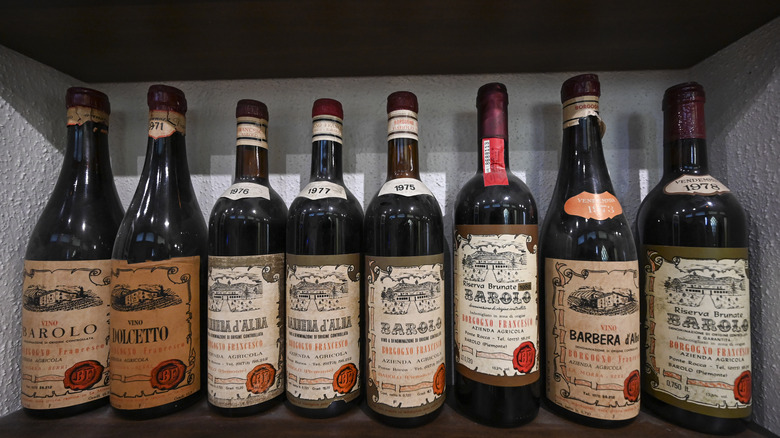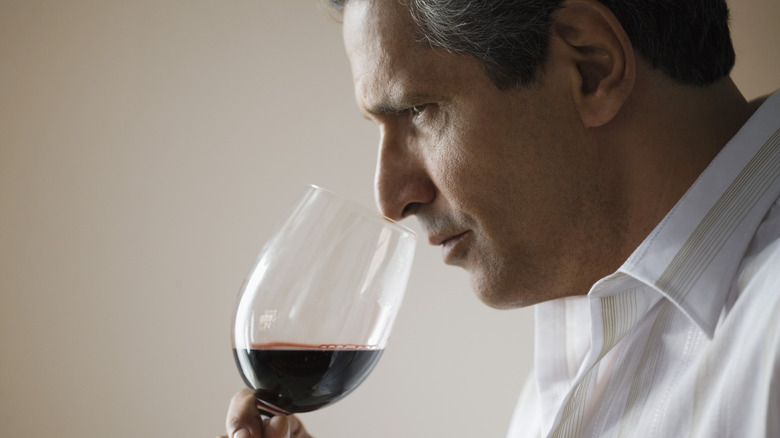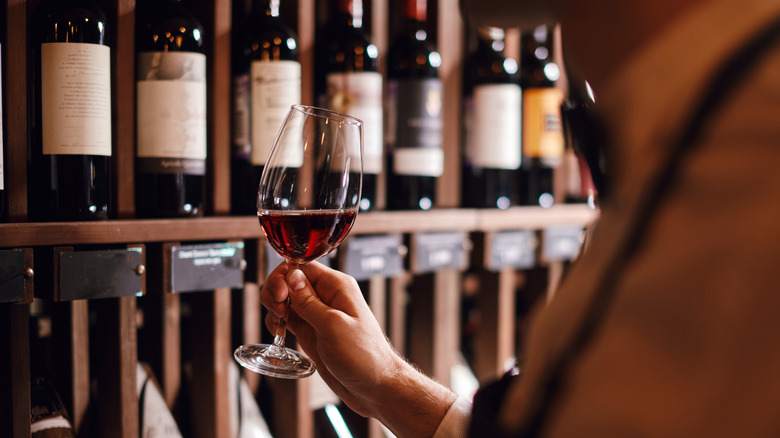Here's What A Wine's Vintage Really Means
You're probably familiar with the expression aging like fine wine, which of course means to get better with age. But does this always mean that the older the wine, the better it is? The short answer is: not necessarily. It depends on a number of factors, including the type of grape used, the environment in which you are able to age the wine, the vintage, and perhaps most importantly, your personal taste preferences, explains The New York Times. When it comes to the taste of wine, it's more than just how long it's sat on your shelf that matters.
When you walk into the liquor store or look over a wine list at a restaurant, it can feel like the whole process is geared towards formally trained sommeliers, not the average person looking for a tasty bottle to go with their meal. You may have heard words thrown around like terroir, vintage, or even bunghole (which by the way, is where the wine pours out of the barrel it was fermented in, per wine.com). Understanding even a few of these terms, especially the vintage, will definitely level up your wine enjoyment.
What is a wine's vintage?
Starting at a very basic level, a wine's vintage is the year that the grapes for that particular batch were harvested, and there are two types: vintage and non-vintage, per Wine Enthusiast. A non-vintage wine would use a mixture of grapes harvested during different seasons, blended together, and can result in a more stable flavor profile across the years, per Wine Folly. But what does the year the grapes were picked have to do with the flavor of the wine?
Actually, a lot. Grapes are quite sensitive to changes in weather — a year of heavy rain or very little rain, an early frost or an unexpected heat wave can all impact the flavors that result from a certain batch of grapes. The vintage is less about the day or few days that the grapes were harvested and mashed, but rather it tells the story of the entire year those grapes spent growing, per Bon Appetit. This means that the same brand — say a bottle of Bordeaux from Opus One in Napa Valley — will taste different in 2018 and 2019, aging aside. In addition, a vintage is less about one specific producer of wine and more about a region as a whole because the whole region will have experienced the same weather. Hence why there are both good and bad vintages ... some years, the weather is just bad for making wine.
Aging your wine
The vintage of your wine is important because it indicates something about the flavor, and the same can be said for how old the wine is. Some wines, particularly full-bodied wines, tend to do better with some age. Lighter wines, usually but not always white wines, are better when consumed within a few years of bottling, per Lohud. Letting your wine age in proper conditions can help to bring out a more complex flavor, but being mindful of what exactly happened the year your wine was harvested will let you know if you should age it or drink it sooner than later.
A bottle that's slightly more acidic than it should be, perhaps from a cold spell that swept through the vineyards, could do with some extra time on the shelf. An unseasonably warm summer, on the other hand, will lead to a much riper wine from the get-go, and therefore a bottle that doesn't require much time on the shelf. If you're uncertain about what happened during a certain vintage or wondering if you should let the bottle sit another few years, pocketbooks of wine are an educational goldmine, but you can also check out crowd-sourced sites where people track their personal experiences, such as Cellar Tracker. The bottom line is wine should be consumed when you want to consume it! It's meant to be enjoyed, not sit on a shelf.


